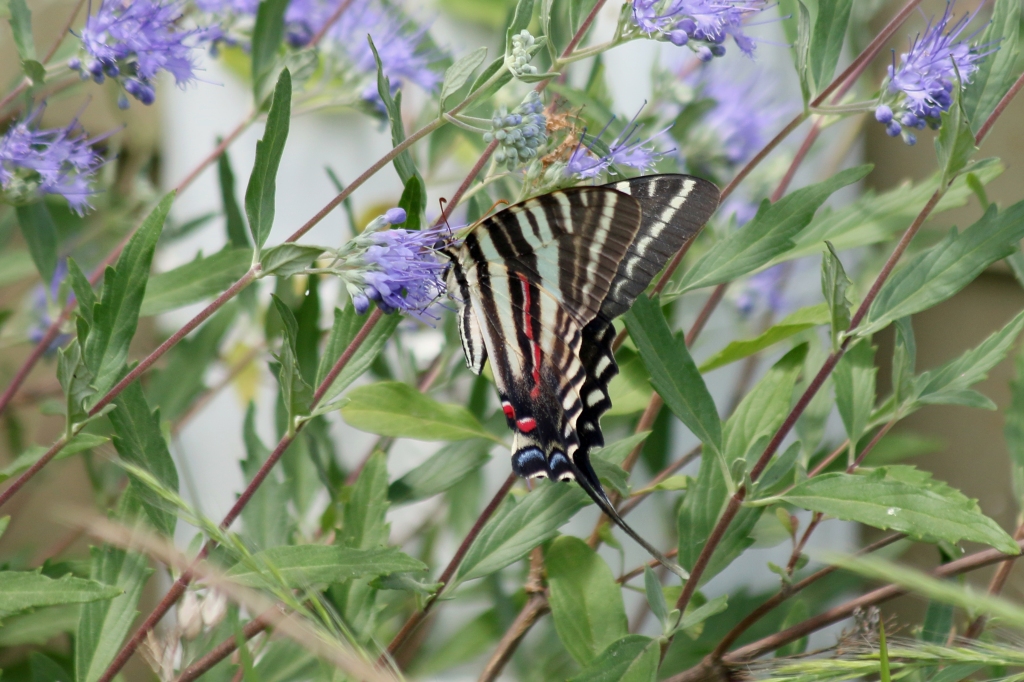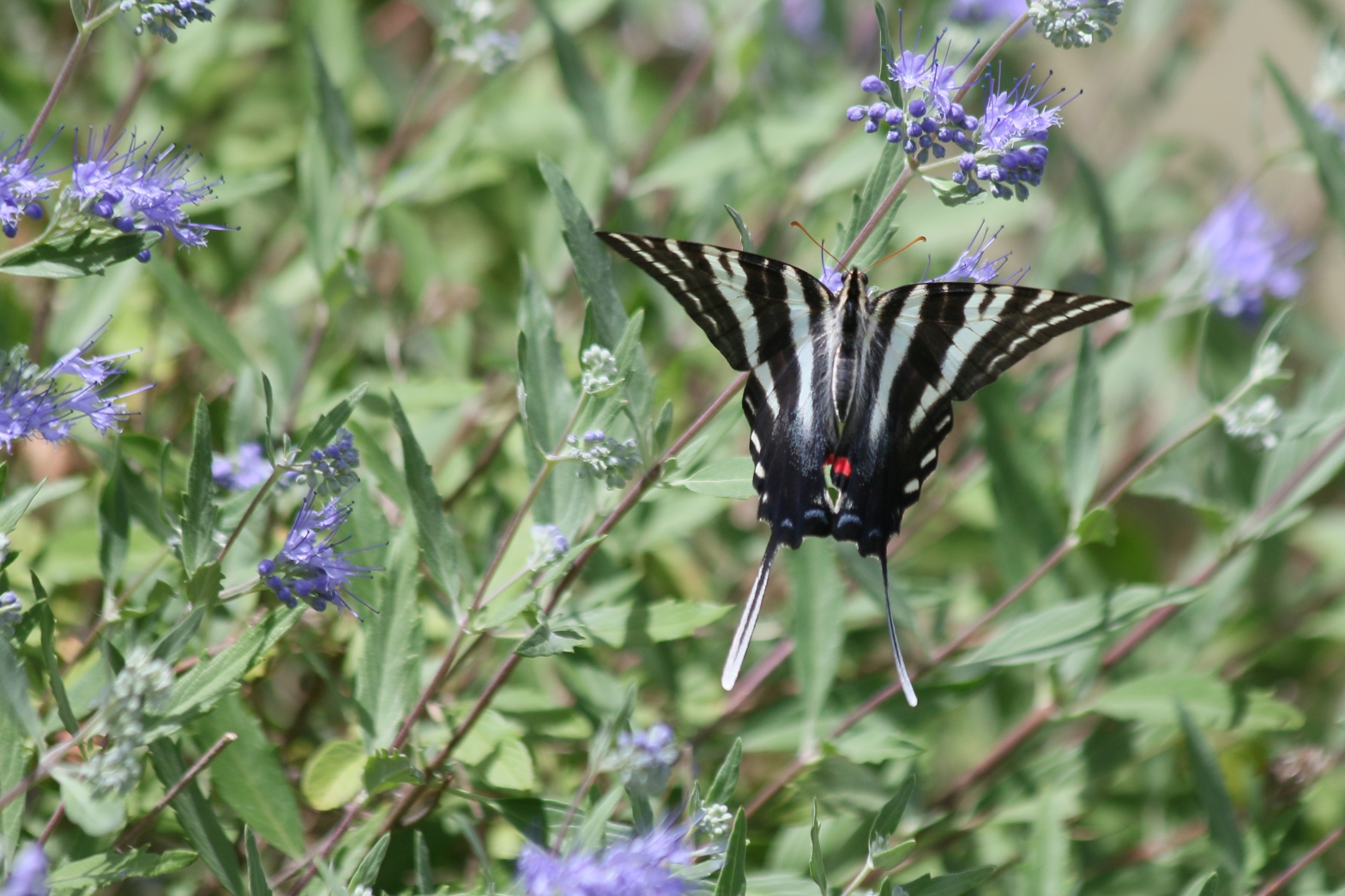
Gardeners have an eye toward the future. We plant annuals for showy flowers later in the season. Perennials often don’t truly shine until the second or third year. And trees, well, they may be planted for shade for our kids or grandchildren to enjoy.
For the last few years, I’ve been gardening to attract, feed, and house wildlife. One creature I hoped to attract is the zebra swallowtail butterfly.
I’ve always been a butterfly enthusiast. As a kid, I collected dead ones and kept them in those little jewel boxes with clear plastic covers. My mother was patient with her budding naturalist. A few years ago, I visited Butterflies and Blooms in the Briar Patch in Eatonton, Georgia. Proprietress Virginia Lynch introduced us to the concept of ‘larval host plants’ — the plant butterfly larvae (caterpillars) eat to survive. I learned butterflies are very specific about their host plant(s), some requiring a single genus or even one species of plant for egg laying. Though adults may feed on numerous kinds of nectar producing flowers, they will only lay eggs on the specific plant(s) that will support their caterpillars. Without eggs, there are no caterpillars. No caterpillars means no butterflies.
Learning all that, I took inventory of the larval host plants at our place. I already had the native plants that supported most of the local swallowtails, skippers, and hairstreaks. But there was a butterfly I deeply desired. With vivid stripes of black and palest turquoise, plus streaks of red, the zebra swallowtail (Protographium marcellus aka Eurytides marcellus) with its very long tails and a 2.5”-4” wing spread, was my prize. I’ve only seen it a few times in my life. Much to my delight, one flew in front of me a few days ago. Fittingly, I was out planting some butterfly favorites, including red lobelia, and red salvia at the time.
You may find zebra swallowtails nectaring at flowers, as I did, or on the ground siphoning salt and minerals from damp soil.
Zebra swallowtails have exactly one larval host: pawpaw shrubs (Asimina triloba). A few years ago, I bought two plants at Nearly Native Nursery and waited for butterflies. And every year I check to see if anything is chewing on the leaves — a sign of caterpillar activity. So far, nothing.
Caterpillars start out black, transition to ash gray and finally turn green with transverse pinstripes of bluish and yellow. After 3-4 weeks, the caterpillar creates a chrysalis and pupates for 10-20 days before emerging as an adult, unless it is overwintering.
The caterpillars that appear in late summer will spend the winter as pupae in a brown chrysalis attached to tree bark. The butterfly I saw recently was one that just climbed out of its chrysalis (eclosed) after a long winter. Hopefully, it will find a mate and the female will lay eggs on my pawpaws. Yes, they will eat the leaves, maybe all of them, since my plants are small. However, the plants are built for this. They will put on new leaves and be fine.
Which brings up another item. If you find leaves that have been partially or totally consumed by some creature, don’t assume you have a “pest problem.” You’re actually doing things right. Plants are not supposed to stand through the growing season intact. Part of their purpose is to provide food for other creatures. Typically, they have plenty of leaves to lose some to caterpillars, deer, and other wildlife. Native caterpillars eating leaves of native plants is what nature intended.
Some chewed leaves doesn’t mean it’s time to spray, or call your pest control company, or yard person. You can water the plant and give it some fertilizer to help it grow new leaves, if you like. No pesticides required. That’s healthier for everyone. (And as I said, no caterpillars means no butterflies.)

Likewise Donna, I also was a junior lepidopterist when a child and learnt to kill and mount butterflies in shirt boxes with clear lids. I was a scientist from a young age with my microscope and later became part of my career as a scientist but in medical field. I have noticed here butterfly varieties and numbers are greatly reduced.
Thanks for sharing your interesting post 😊
LikeLike
I don’t think I killed the butterflies, but was always on the lookout for dead ones to collect. All the wildlife numbers have been reduced by the greedy and/or ignorant actions of humans. That being said, we’re having a good butterfly year this year. Last year, we barely saw a butterfly before July. This year, we began seeing them in March. It’s been raining regularly for the last couple of years. Everything flourishes in wetter years.
LikeLiked by 1 person